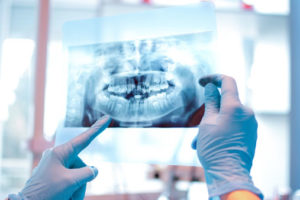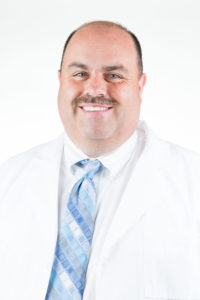Dental X-rays

Have questions about dental x-rays? Our dentists took some time to share some valuable information about dental x-rays as well as answer common questions we get from our patients about x-rays. View the table of contents below to learn more or find your question and get an answer from one of our dentists!

The following content was provided by Dr. Raleigh Wright, CCO/Clinical Lead & NCSBDE Board Member, and has been medically reviewed for accuracy. Some relevant links have been added to audio transcripts to provide resources for additional information.
Table of Contents:
Click on a question below to be taken directly to that answer.
- Are dental x-rays different from normal x-rays?
- What are ‘bite-wing’ x-rays?
- Are dental x-rays safe?
- How often should I get dental x-rays? Do I have to get x-rays when I go to the dentist?
- Do I have to get new dental x-rays when I change to a new dentist?
- Do kids need dental x-rays more often than adults?
- Do dental x-rays cost extra? Does insurance cover dental x-rays?
Are dental x-rays different from normal x-rays?
Answer provided by Dr. Raleigh Wright. Transcript included below.
Dr. Wright:
Right, so dental x-rays, obviously, because they’re much smaller, they are different. There’s a lot less radiation that you’re getting to your body because of dental x-rays, so they are smaller, there’s less radiation. When you get x-rays for a broken bone or stuff like that, those are specific to that area, whereas dental x-rays, we take them usually once a year, the little bitewing x-rays, to check in between the teeth. So they are more frequent, but they’re also a lot less radiation.
What are ‘bite-wing’ x-rays?
Answer provided by Dr. Raleigh Wright. Transcript included below.
Dr. Wright:
So that’s where you actually bite on the little tab, you have the film in your mouth, you bite on a little tab. Now we have digital x-rays, which also reduces the amount of radiation that’s needed to show the x-ray’s on the computer. But the bitewing x-ray, you’re actually biting on a little tab and that’s why it’s called a bitewing. And those x-rays show very well in between the teeth if there’s cavities that you can’t see clinically in the mouth.
Are dental x-rays safe?
Answer provided by Dr. Raleigh Wright. Transcript included below.
Dr. Wright:
So yes. So because they’re much smaller than normal x-rays, like a chest x-ray. We also use lead aprons that will cover your chest, your abdomen and your neck so that you’re not getting radiation to other parts of your body. The measure that they use is microsieverts for the amount of radiation given for x-rays and stuff. So for one bitewing you get five microsieverts of radiation. So a set of four bite wings, you get 20 microsieverts. To compare that, a chest CT scan is 7,000 microsieverts. A mammogram could be up to 10,000 microsieverts. Just a normal day being in and out of the house or your office or work or anything you’re getting background radiation of eight microsieverts. So you’re getting more microsieverts just living day to day than one bite wing.
Interviewer:
Interesting. That’s cool.
Dr. Wright:
In addition, if you fly across country, you get about 30 microsieverts because of being on the airplane.
How often should I get x-rays at the dentist? Do I have to get x-rays when I go to the dentist?
Answer provided by Dr. Raleigh Wright. Transcript included below.
Dr. Wright:
So we’re unable to see between the teeth without the x-rays. We can’t see the bone support of your teeth as well. Just kind of measuring we use a little periodontal probes sometimes to measure the gum, but that doesn’t show us the bone levels and how strong your teeth are in your jaws and if you have periodontal disease.
So we can’t diagnose correctly without appropriate x-rays. The x-rays also can show if you have tumors or cysts or any type of cancer, it’ll show up on the x-rays, especially the panorex, which is the larger x-ray. We recommend once a year for the bite wings, the little x-rays and the panorex, which shows all the teeth and the jaws, usually every four to five years. But every patient is different. It depends on how many teeth you have. Some people actually have spaces between their teeth, so we don’t need the x-ray to see between the teeth. So we wouldn’t take the x-rays as frequently. Our doctors at Lane and Associates are only going to take x-rays that are needed to diagnose and to make sure you have healthy teeth and gums.
Do I have to get new dental x-rays if I change to a new dentist?
Answer provided by Dr. Raleigh Wright. Transcript included below.
Dr. Wright:
Most dental offices now have digital x-rays, so they are able to be emailed or forwarded or stored on a little hard drive or something. You can bring your x-rays from your other dentist. Most of the time those are diagnostic and we can use those if they’ve been within a year. If we do see something questionable or we can’t diagnosis on those extras, we’ll need to take new ones here, but we would discuss that with you before we take them.
Do kids need dental x-rays more often than adults?
Answer provided by Dr. Raleigh Wright. Transcript included below.
Dr. Wright:
Sometimes yes, the panorex, the big x-ray, because they are developing and losing teeth and gaining new teeth and if they’re going for orthodontic treatment and stuff. So yes, sometimes they will take more frequent x-rays to see how the teeth are moving and how things are growing, but yet even with the bite wings, it’s still once a year, is what’s recommended. But the panorex you may need a little more often as they’re growing.
Do I have to pay extra for x-rays at the dentist? Does insurance cover x-rays at the dentist?
Answer provided by Dr. Raleigh Wright. Transcript included below.
Dr. Wright:
So usually insurance will pay for x-rays because they recognize how necessary it is to fully diagnose your condition and to make sure you have healthy teeth. I will say another thing that Lane and Associates have. Several of our offices have 3-D imaging x-rays, which is really, it’s the newest technology, where we’re able to see things in 3-D, kind of like the ultrasounds that you get with your baby now where you can see the baby in 3-D. We can see your jaws and your teeth in 3-D, which is very useful for surgeons who are taking out wisdom teeth to see where the nerves and vessels are as well as placing implants and root canal therapy. It’s very good to see where the nerves are in your teeth when they’re doing root canals.

